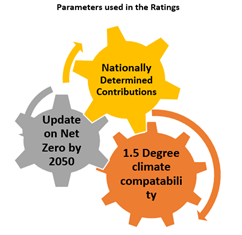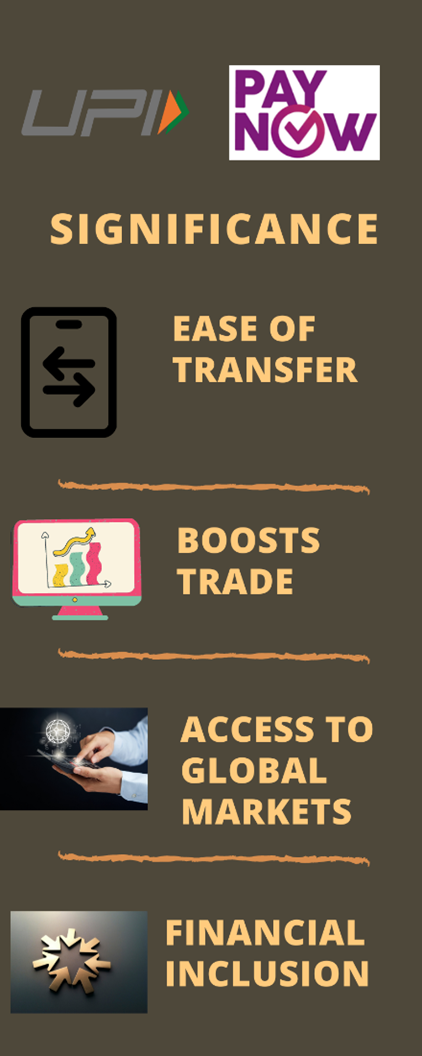Monday, 20th September 2021
The AUKUS Agreement
In News
A new enhanced trilateral security partnership for the Indo-Pacific named “AUKUS” has been announced recently.
About the Trilateral Security Partnership-AUKUS
- A secure Indo-Pacific: The AUKUS Agreement is a security partnership between Australia, the United Kingdom, and the United States where the countries’ technology, scientists, industry and defence forces will work together to deliver a safer and more secure Pacific.
- Nuclear Submarine Transfer to Australia: Its first major initiative would be to deliver a nuclear-powered submarine fleet for Australia. It will give Australia naval heft in the Pacific, where China has been particularly aggressive.
- The AUKUS agreement led to the scrapping of a historic $90 billion deal between France and Australia for nuclear-powered submarines.
Significance of the agreement
- Stepping up Quad’s warfare capabilities: Alongside India’s stated intent to acquire more nuclear-powered submarines, it will amount to a step-change increase in the Quad’s (a grouping of India, USA, Australia and Japan) undersea and anti-submarine warfare capabilities.
- Multi-directional approach: Under AUKUS, sharing of military and critical capabilities like cyber, artificial intelligence and quantum computing, will be the key areas, where China currently is dominating.
- Significant for India: Observers believe it to be a win-win situation for India. India faces an unresolved border issue with China and the 18-month long military standoff between the two sides in eastern Ladakh is yet to be resolved.
- This would allow India to be more ambitious in its foreign policy and defence approach. As India's partners become more self-confident and assured of their defence capabilities, it allows India a greater strategic room to manoeuvre in the indo-pacific
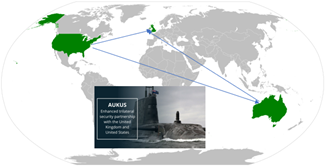
About Nuclear submarines
- About: A nuclear-powered submarine, as the name suggests, is powered by a nuclear reactor but it is not a nuclear weapon. Every nuclear-powered submarine draws from its own miniature nuclear reactor onboard, which is typically fuelled with uranium.
- Capability: Nuclear-powered submarines do not have the same limitations that face conventional submarines on weapons storage, speed and endurance. They can stay completely submerged for many months, limiting the opportunities for detection by adversaries.
- Nations with these submarines: Only six nations own and operate these submarines currently: China, France, India, Russia, the UK and the US.
- Currently, India has a single Akula-class SSN in service, which was leased from Russia in 2011, and two Arihant-class SSBNs. Another Russian Akula-class SSN due for arrival in 2025, six submarines to be built as part of Project 75 and a new S5-class of SSBNs.
- Classification: Nuclear-powered submarines can be divided into three broad categories — the nuclear-powered fast-attack submarines or SSNs, the nuclear-powered ballistic submarines or SSBNs and the nuclear-powered cruise missile submarines or SSGNs.
Source:
- Explained: The AUKUS agreement to equip Australia with n-subs, and why it has upset France:
- U.S., U.K. and Australia announce new security partnership for Indo-Pacific:
- Aukus: UK, US and Australia launch pact to counter China
Image source:
Survey on farm incomes
In News
The National Statistical Office (NSO) has released the Situation Assessment of Agricultural Households and Land and Livestock Holdings of Households in Rural India, 2019 survey.
Findings of the Survey
- Income: There has been a 59% increase in farmers’ incomes when compared with the previous 2012-13 survey and the increase is 2% when adjusted for inflation
- The real per capita income of a farmer is ₹27 a day.
- The viability of agriculture: It has improved, the overall indebtedness has come down and appetite for risk mitigation has improved.
- The number of rural households getting primary income from agriculture has gone up from 54% in 2013 to 58% in 2019. This indicates that agriculture assumes more economic importance to more rural households.
- Overall indebtedness: Overall indebtedness of agricultural households has come down. The percentage of agricultural households indebted has come down from 52% in 2013 to 50% in 2019. The percentage decrease is substantial in agricultural households having less than 1 acre of land. The amount of outstanding credit has come down substantially in the lowest land size class.
- Crop insurance: Crop insurance (risk mitigation) has gone up. The percentage of crop-producing households insuring their crops has substantially increased, which indicates more farmers are adopting risk mitigation measures.
- Household Operational Holdings: Household operational holding has been defined as land that was used wholly or partly for agricultural production and was operated (directed/managed) by one household member alone or with assistance of others, without regard to title, size or location.

About the Survey
- Aiming to get a holistic view of a farmers’ income, Land and Livestock Holdings of Households and Situation Assessment of Agricultural Households, which used to be different surveys earlier, were conducted in an integrated form for the first time.
- The integrated survey had an objective of generating different indicators like:
- ownership and operational holdings of rural households
- ownership of livestock
- income, productive assets and indebtedness of agricultural households
- farming practices of agricultural households
- awareness and access to various technological developments in the field of agriculture
- receipts and expenditure of the agricultural households’ farm and non-farm businesses and receipts from all other economic activities pursued by the members of the agricultural households.
- Definition of agriculture household: A household receiving more than Rs. 4,000 as value of produce from agricultural activities and having at least one member self-employed in agriculture during last 365 days.
Sources:
India can achieve net zero carbon emissions: Study
In News
A Study titled ‘Getting Net Zero Approach for India at CoP 26’, India can achieve ‘net zero’ carbon emissions by 2065-70.
About the Survey
- As per the survey, India can achieve ‘net zero’ carbon emissions by 2065-70 as its greenhouse emissions will peak by 2035 and if it caps coal usage in the next 10 years.
- This will also depend on rich countries doubling climate finance to US $200 billion per year in the next few years.
- The paper titled ‘Getting Net Zero Approach for India at CoP 26’ strongly advocates that India should declare its ‘net zero’ target year at the 2021 United Nations Climate Change Conference or CoP 26 starting from October 31 in Glasgow, United Kingdom.
- It said that India’s traditional argument that it has to emit for its own development no more holds “diplomatic ground” as there are viable non-emitting energy alternatives available.
- The survey suggests that net zero target years can be given to countries based on the remaining available carbon budget with the least allocation to G20 (richest) countries, which account for close to three-quarters of global emissions.
Net Zero Carbon emission and its importance
- Net-zero (or Carbon Neutrality): It is a state in which a country’s emissions are equal to or less than absorption and removal of greenhouse gases from the atmosphere. It does not mean that a country would bring down its emissions to zero.
- Carbon negative: Bhutan which is often described as carbon-negative because it absorbs more than it emits.
- It can be achieved by:
- Reducing emissions: High penetration level of renewables in the energy system, high level of electrification of energy grids, introduction of cost-effective green hydrogen-based economy, and biomass based biofuel production at scale.
- Increasing absorption of emissions: By creating more carbon sinks such as forests, while removal of gases from the atmosphere requires futuristic technologies such as carbon capture and storage.
- Intergovernmental Panel on Climate Change (IPCC) had said achieving net zero by 2050 was a must to keep global temperature rise to 1.5 degrees Celsius, to pre-industrial level by the end of 2100.
Sources:
Minilaterals in the Indo-Pacific
In News
The United States, United Kingdom, and Australia (AUKUS) announced a new defence deal recently, under which America and Britain will help Australia deploy nuclear-powered submarines in the Pacific region.
About the News
- The deal is seen as a step towards curtailing China, which has made significant aggressive manoeuvres in the Pacific region, especially in and around the South China Sea, where it has expansive territorial claims.
- The trend towards minilateralism is unlikely to slow down given the contemporary security environment in the Indo-Pacific. This is visible in China’s behaviour with its neighbours becoming only more belligerent, even amidst COVID-19 pandemic crisis.
What are Minilaterals?
- Meaning: Minilaterals refer to informal and more targeted initiatives intended to address a “specific threat, contingency or security issue with fewer states (usually three or four) sharing the same interest for resolving it within a finite period of time.
- Features: They are ad hoc, and their outcomes and commitments are voluntary in nature. Minilaterals focus on gathering the “critical mass” of members necessary for a specific purpose, in contrast to the broad and inclusive approach associated with multilaterals.
- Origins: The idea of minilaterals is not new. Notably, the multilateral institutions that were created in the post-war era were negotiated through “disguised” minilateralism, pursued between the United States (US) and other Atlantic powers.
Reasons for the Rise of Minilaterals
- Inertia and stagnation in Multilaterals: Large organisations with formal institutional structure, international bureaucracies, and heterogenous membership, face hurdles that impede prompt decision-making.
- Moreover, the evolving global order and the changing nature of threats are posing difficult questions on the continued relevance of multilateral frameworks.
- Growing importance of Strategic Alliances: One of the reasons for the shift to minilateralism is the growing importance of strategic alliances over global cooperation. These initiatives can facilitate the creation of issue-specific partnerships between like-minded countries. Example: Quad, has been created to advance the interests of like-minded countries.
- Rising Geopolitical Rivalry: The rise of a multipolar world—along with the emergence of geopolitical rivalry between the US and China—have heightened fissures in multilateral organisations and stalled decision-making and institutional reforms.
- Growth of ICT: Technology—from telephonic communications, to the Internet—are allowing countries to expand their networks of global and regional cooperation. The rise of technology has undeniably given way to less formal means of communication.
- Capacity constraints of countries: China has active territorial disputes with most of its neighbours. All countries that are engaged in minilateralism have had to deal with aggressive Chinese behaviour in their backyard, while lacking in military and economic capacity.
- Cooperation in HADR, the promotion of freedom of navigation, and respect for rule of law and the rules-based order are important factors driving minilateralism in the Indo-Pacific.
Where does India stand on it?
- India is not new to minilateralism. India has shun many of its traditional inhibitions about joining trilateral and other strategic minilateral groupings in the Indo-Pacific given the evolving security condition around its borders.
- In October 2015, the Malabar naval exercises—a series of bilateral naval exercises between the US and India—saw the participation of Japan.
- The India-Australia-Indonesia trilateral that started in 2017. Similar to the India-Australia-France trilateral, focused on various developments in the Indo-Pacific.
- The Australia-Japan-India trilateral with its action-oriented agenda, have recently agreed to set up a supply chain resilience programme for the Indo-Pacific.
What can be the possible impact of Minilaterals?
- Bring in Balance of Power: Historically, countries like India have shied away from playing a role in shaping the balance of power dynamics in the region; however, a disputatious China has driven India, and many other countries in the Indo-Pacific to adopt a power-centric and pragmatic approach to moulding the regional order.
- Coming together of Like-minded Partners: Multilaterlism has also been useful in stepping up military preparedness and interoperability with like-minded strategic partners. India has, so far, signed agreements with all the Indo-Pacific powers, including the US, South Korea, Singapore, Japan, France and Australia.
- Impact on Multilaterals: Minilaterals can contradict and diminish the role of regional multilateral institutions such as ASEAN, ASEAN Regional Forum (ARF), and East Asia Summit. ASEAN centrality has been reiterated by a number of Indo-Pacific leaders, which has weakened the neutrality, independence and ‘centrality’ of these institutions.
- Impact on Global Organizations: The preference for minilaterals can undermine the efficiency and legitimacy of international organisations. This will reduce the incentive for countries to engage with multilateral frameworks — a possibility that not only impacts their relevance, but can also hamper their work programmes.
- Impact on Global governance: Minilaterals can lead to fragmentation of global governance mechanisms and foster the creation of mutually exclusive power blocs. The formation of competing blocs can escalate great power competition and diminish possibilities for great power cooperation.
- Example: China-led Shanghai Cooperation Organisation and the Asian Infrastructure and Investment Bank on one hand, and the Western-led G20 and G7 on the other.
- Compliance and Accountability issues: Minilaterals promote voluntary and non-binding targets commitments, as opposed to legally binding ones. This gives rise to compliance and accountability issues, which can in turn frustrate the objectives of global governance and international cooperation.
Way Forward
- More ways need to be explored on how minilaterals can supplement the work of multilaterals.
- In climate action for instance, minilaterals can help countries to cooperate on research and implementation of technologies in the field of renewable energies.
- In trade negotiations, minilaterals can fill gaps in multilateral frameworks, and allow countries to engage in political dialogue to resolve outstanding, global-level issues.
- In security cooperation, minilaterals are a useful tool of diplomacy as they complement existing bilateral partnerships, allow countries to focus on specific regions, while the closed-door nature of discussions in minilaterals helps retain confidentiality.
- Work on Convergence of Interests: There are also arguments that in order for minilaterals to flourish, it may be better to test the convergence of interests, threat perceptions and practical feasibilities.
- Need to be tested thoroughly: Though minilaterals expedite consensus building and facilitate policy coordination, it is unclear if they are in fact better than multilateral organisations in achieving concrete outcomes. Regarding minilaterals as a panacea for all the ills of multilateralism risks prioritising short-term gains over long term ones — the costs of which could be higher than anticipated.
Conclusion: In essence, minilateralism is a symptom of the growing power conflict in the region, not its cause. The rising phenomenon of minilateralism is not to be approached as “completely replacing existing alliances and institutions but as complementing them. There is truth to this, states continue to be invested in regional and multilateral platforms despite their participation in minilateral settings. Successful outcomes within minilateral settings can be gradually taken to regional and multilateral platforms to garner support from the broader community.
Question: Discuss the reasons for the growth of minilaterals in the Indo-Pacific region. What can be the possible impact of the rise of minilaterals?
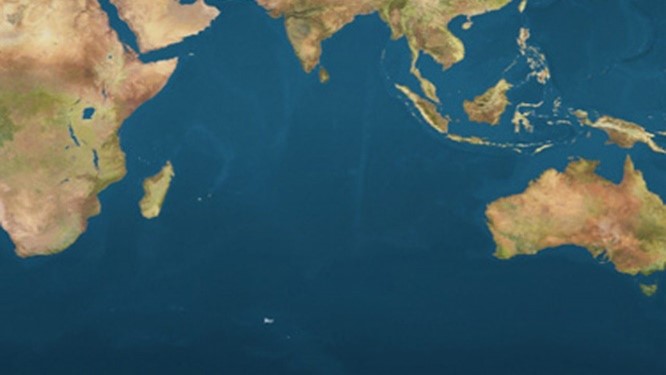
Sources:
The Hindu
On 20th September 1878, The Hindu, an English daily was published for the first time as a weekly newspaper. By 1889, The Hindu had begun publishing as an evening daily. The Hindu newspaper was founded in Chennai by law students. The Hindu was established to support Sir. Muthuswami Iyer at the Madra High Court for a judgeship and to make amends for the propaganda against Iyer by the Anglo-Indian Press. The newspaper was the first of its kind to protest against the discrimination practiced by the British in India.
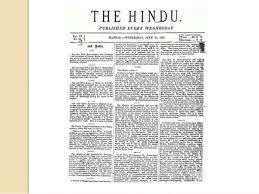
Sources:
Death of Songbirds
This is image of migrating songbirds that died after crashing into skyscrapers in New York City. Stormy weather at night has been claimed to have contributed to the deaths. Storm might have brought the birds in lower than they would have otherwise have been, or just disoriented them. Also, artificial night-time lighting in general attract and disorient migrating birds.
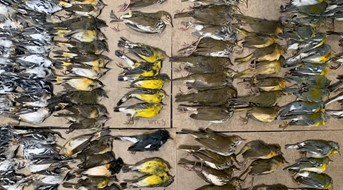
Source:
Meghalaya Enterprise Architecture Project (MeghEA)
- Context: The Union government and Meghalaya government have jointly launched the Meghalaya Enterprise Architecture Project (MeghEA).
- The project aims to improve governance and service delivery at grassroots level using power of Digital technologies, which is in line with India’s vision of Digital India.
- The initiative is spread across 6 pillars that include: Governance, Human Resources, Entrepreneurship, Primary Sector, Infrastructure and Environment, to make Meghalaya a high income state by 2030.
- The Envisaged impact of the project include:
- Connect (connected citizen connected government), Collaborate (efficiently collaborating government) and Empower (digitally enabled citizens).
- Interoperability among various public, private and governmental applications.
- Improved and integrated delivery of Financial services.
- Appropriate adoption of national platforms i.e. Aadhaar, Umang, DigiLocker, NCoG, eSign

Source:
Saffron - Edukemy Current Affairs
- Context: The price of Indian saffron has skyrocketed in the international market after the Taliban crisis hit Afghanistan’s export of Saffron.
- Kashmir saffron, which is cultivated and harvested in the Karewa (highlands) of J&K, is renowned globally as a spice and is believed to have been introduced in Kashmir by Central Asian immigrants around 1st Century BCE.
- Its unique characteristics are its longer and thicker stigmas, natural deep-red colour, high aroma, bitter flavour, chemical-free processing, and high quantity of crocin (colouring strength), safranal (flavour) and picrocrocin (bitterness).
- It is used in cosmetics and for medicinal purposes and is available as Lachha Saffron, Mongra Saffron and Guchhi Saffron.
- The Kashmir Saffron has received the Geographical Indication (GI) tag in 2020.
- Iran, India (7%), Spain and Greece are the major saffron producing countries with Iran contributing about 88% of world's saffron production.

Sources:
India-Second highest women learners for online courses in world-Study
- Context: The Women and Skills Report by Coursera released a report on performance of women with the onset of the pandemic through June 2021.
- Key Highlights of the report:
- With 4.8 million registered women learners, India ranks second worldwide for the highest number of registered women learners.
- Women in India are learning online at higher rates compared to pre-pandemic, representing 44% of new learners in 2021, up from 37% in 2019.
- For STEM courses, the gender gap has narrowed from 23% enrolments from women in 2019 to 32% in 2021.
- Women’s enrolments in entry-level professional certificates have gone up from 22% in 2019 to 30% in 2021.

Source:
- India has second-highest women learners for online courses in world: Study:
- India has Second Highest Women Learners on Coursera Across the World, Most in STEM Courses:
- Online Learning: How to acquire new skills during lockdown:
The Mu variant
- Context: Finland has reported its first case of ‘Mu’ variant of Covid-19.
- The Mu variant of Covid-19, officially termed as 1.621, has been designated as a ‘Variant of Interest’ by the World Health Organisation (WHO) as it has so me mutations.
- Mu carries key mutations, including E484K, N501Y, and D614G, that have been linked with increased transmissibility and reduced immune
- It was first found in Colombia earlier this year and has now been detected in as many as 39 other countries apart from Finland.

Source:
Feasible fiscal strategies for India- HBL
Essence: Public debt has risen steadily as the demands for government spending are much higher than its ability to raise revenue. Covid-19 has aggravated the issue with demands for higher spending. Government finances have been impacted by building capital intensive industry in the public sector and welfarism. Expenditure on health, education, physical and social infrastructure was inadequate. As a result, human development indices and quality of public services remained low.
Asset monetization can help transform the expenditure profile that can improve governance as well as delivery. Centre and State spending can be improved by restructuring expenditure towards raising capacity and lowering costs. Share of direct taxes should be increased in a fair way, and technology and databases can be used to increase the tax base. Industrial policies that use taxes/tariffs/subsidies to promote activity should have strict sunset clauses. With proper decentralization, health and education can be financed through user charges and property tax.
Why you should read the article?
- To understand the various demands of public expenditure and ability of the government to raise revenue.
- To understand the possible solutions for increasing revenue and effective government expenditure.
Source:
The relative income, subjective well-being connect- TH
Essence: The article focusses on two distinct approaches to measurement of well-being, first being the income/expenditure one and the second one is of subjective wellbeing (SWB). The first measurement being more quantitative one fails to cover the qualitative aspects like gender, schooling, religion status, etc. which is being covered by SWB. SWB and income/expenditure are positively related but at a diminishing rate.
The study shows that at a point in time, SWB/happiness varies directly with income both among and within nations, but overtime, happiness does not trend upward as income continues to grow. So, the policy should just not focus on relentless pursuit of income growth but also on the concept of share growth through remunerative employment in order to enhance well being.
Why you should read this article ?
- To understand the relation between income growth and subjective wellbeing.
- To understand the importance of economic growth in one’s well-being.
Source:
Why India needs ‘good’ urbanization- IE
Essence: There are contrasting views on post-Covid debate on ‘cities as desirable and undesirable technology’ because they are regarded as hostile to migrants, infection hotspot tendency, etc. But we need to understand that cutting back on urbanisation can hurt India’s per capita incomes. India’s problem is not land, labour or capital but our challenge is the productivity upside of good urbanisation. Marchetti spoke of 30 minutes being the most acceptable time for commutation of an essential service provider but in India, we need proper planning and investment to make the Marchetti constant possible. Reducing the gap between the annual spending on basic infrastructures by central government and the local bodies is important. Good urbanisation is crucial to delivering economic justice for women, children, and Dalits in both rural and urban areas.
Why should you read this article?
- To understand the issues associated with India’s urbanization and why we need good urbanization.
- To understand the concept of Marchetti constant with Indian application of the same.
- To understand the reasons responsible for gaps between central and local bodies spending on basic infrastructure.
Source:
Biotechnology in Eradicating Stubble Burning
Background
- Recurrence: The phenomenon of stubble burning has become a yearly affair esp in North India
- AQI: Its impact is worst felt in and around Delhi NCR during winters.
- Degraded Land: Half of India’s agricultural land is degraded due to soil health imbalance.
Speed Kompost: A biotic solution to address stubble burning
- Speed of Decomposition: It is a bio product that decomposes the stubble in 15 days (50 % more efficient).
- Fertility: Helps in bettering soil health and integrated nutrition management of cropped area.
- Development: produced by Kan Biosys, Pune and is used for sustainable agricultural practices around the world.
Quote:
If agriculture goes wrong, nothing else will have a chance to go right. MS Swaminathan
Where can it be used:
Paper 3: E-technology in the aid of farmers, Environmental Pollution
Source:
Share the article
Get Latest Updates on Offers, Event dates, and free Mentorship sessions.

Get in touch with our Expert Academic Counsellors 👋
FAQs
UPSC Daily Current Affairs focuses on learning current events on a daily basis. An aspirant needs to study regular and updated information about current events, news, and relevant topics that are important for UPSC aspirants. It covers national and international affairs, government policies, socio-economic issues, science and technology advancements, and more.
UPSC Daily Current Affairs provides aspirants with a concise and comprehensive overview of the latest happenings and developments across various fields. It helps aspirants stay updated with current affairs and provides them with valuable insights and analysis, which are essential for answering questions in the UPSC examinations. It enhances their knowledge, analytical skills, and ability to connect current affairs with the UPSC syllabus.
UPSC Daily Current Affairs covers a wide range of topics, including politics, economics, science and technology, environment, social issues, governance, international relations, and more. It offers news summaries, in-depth analyses, editorials, opinion pieces, and relevant study materials. It also provides practice questions and quizzes to help aspirants test their understanding of current affairs.
Edukemy's UPSC Daily Current Affairs can be accessed through:
- UPSC Daily Current Affairs can be accessed through Current Affairs tab at the top of the Main Page of Edukemy.
- Edukemy Mobile app: The Daily Current Affairs can also be access through Edukemy Mobile App.
- Social media: Follow Edukemy’s official social media accounts or pages that provide UPSC Daily Current Affairs updates, including Facebook, Twitter, or Telegram channels.

